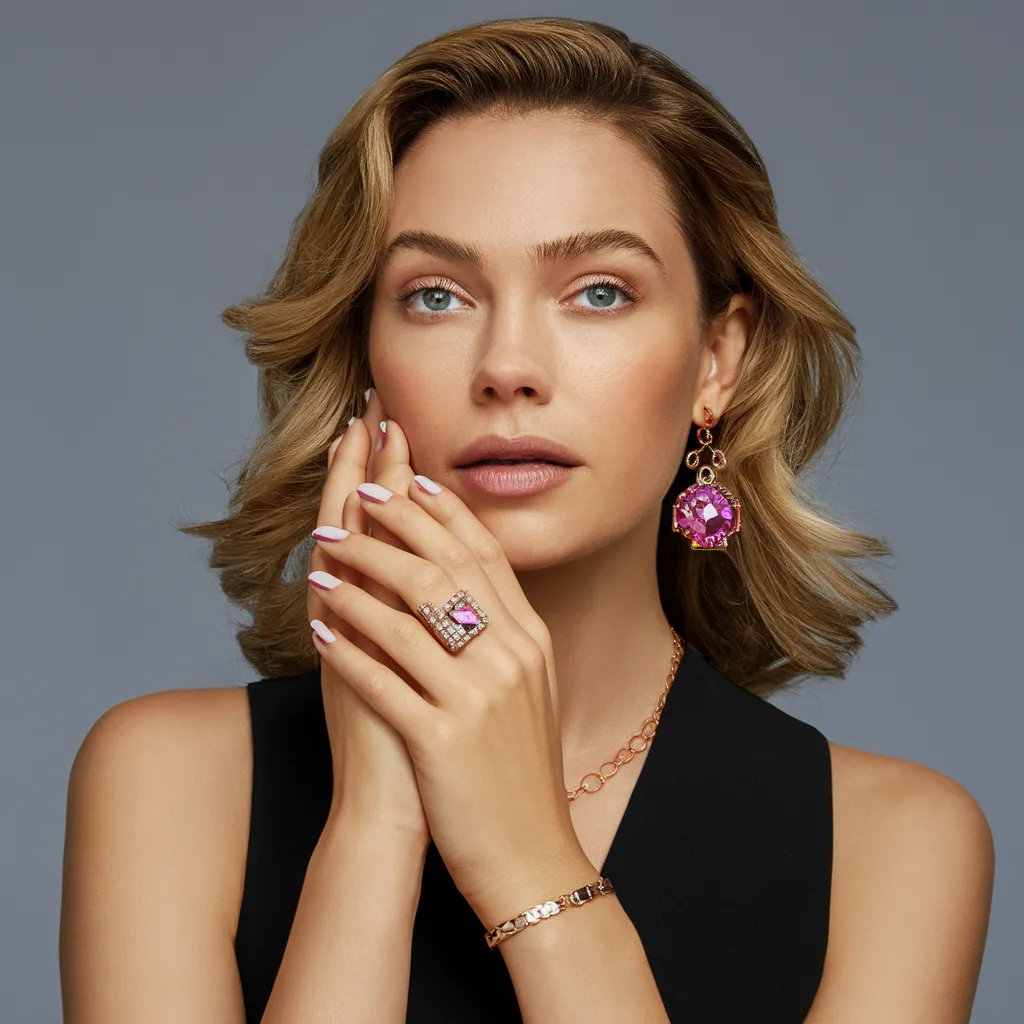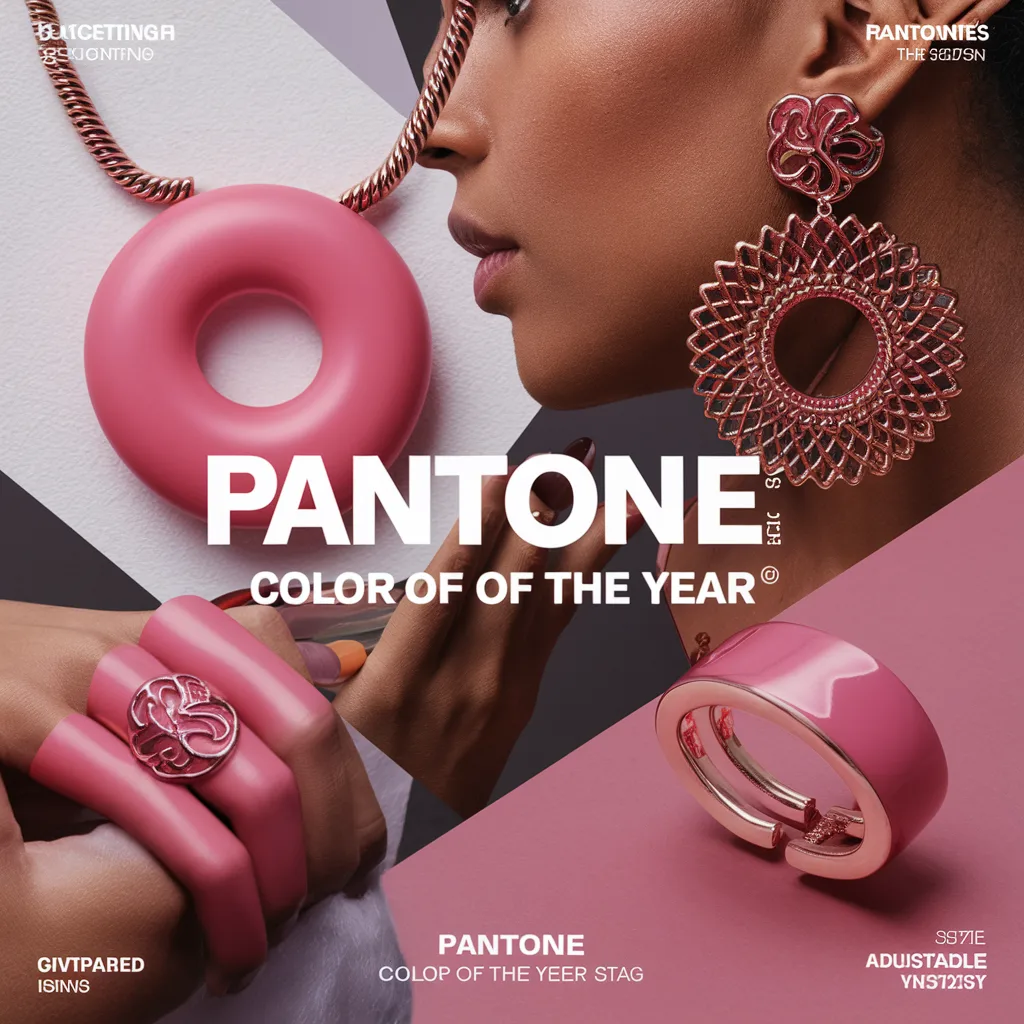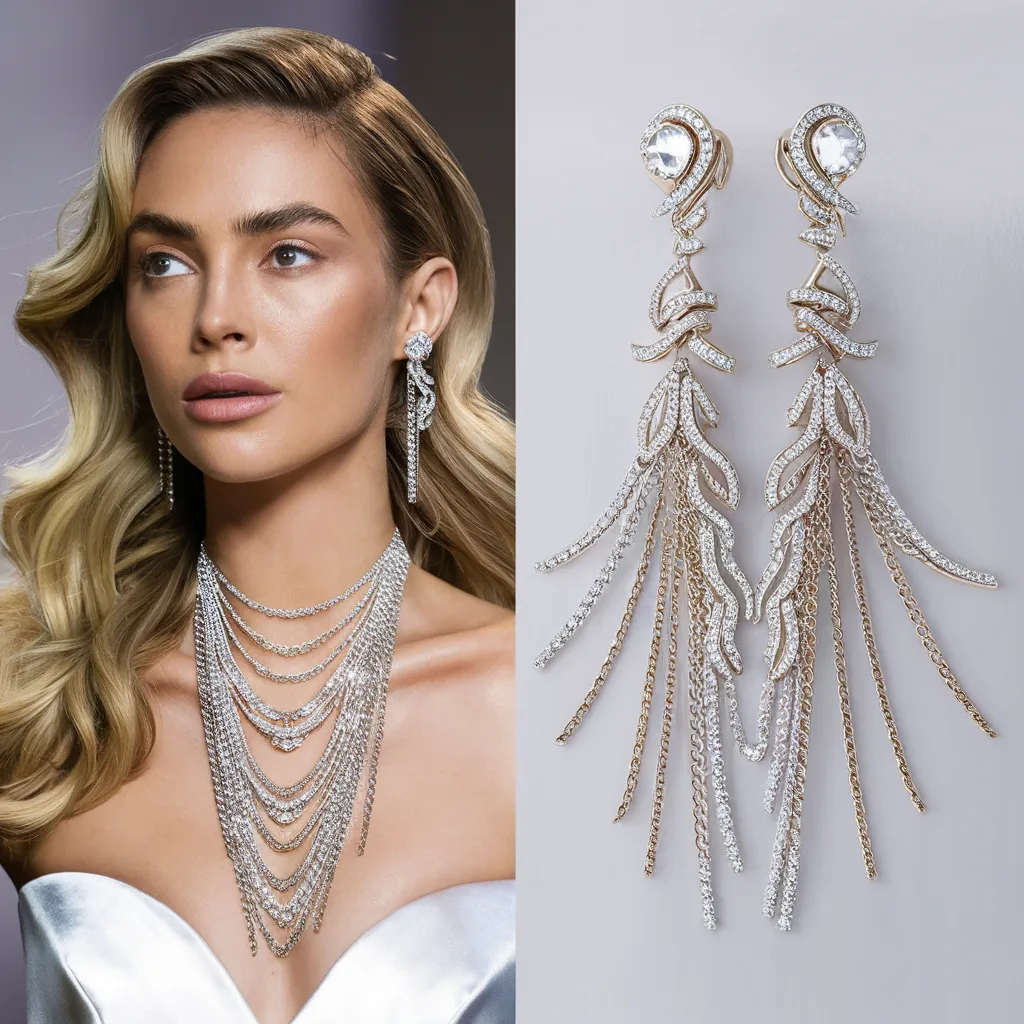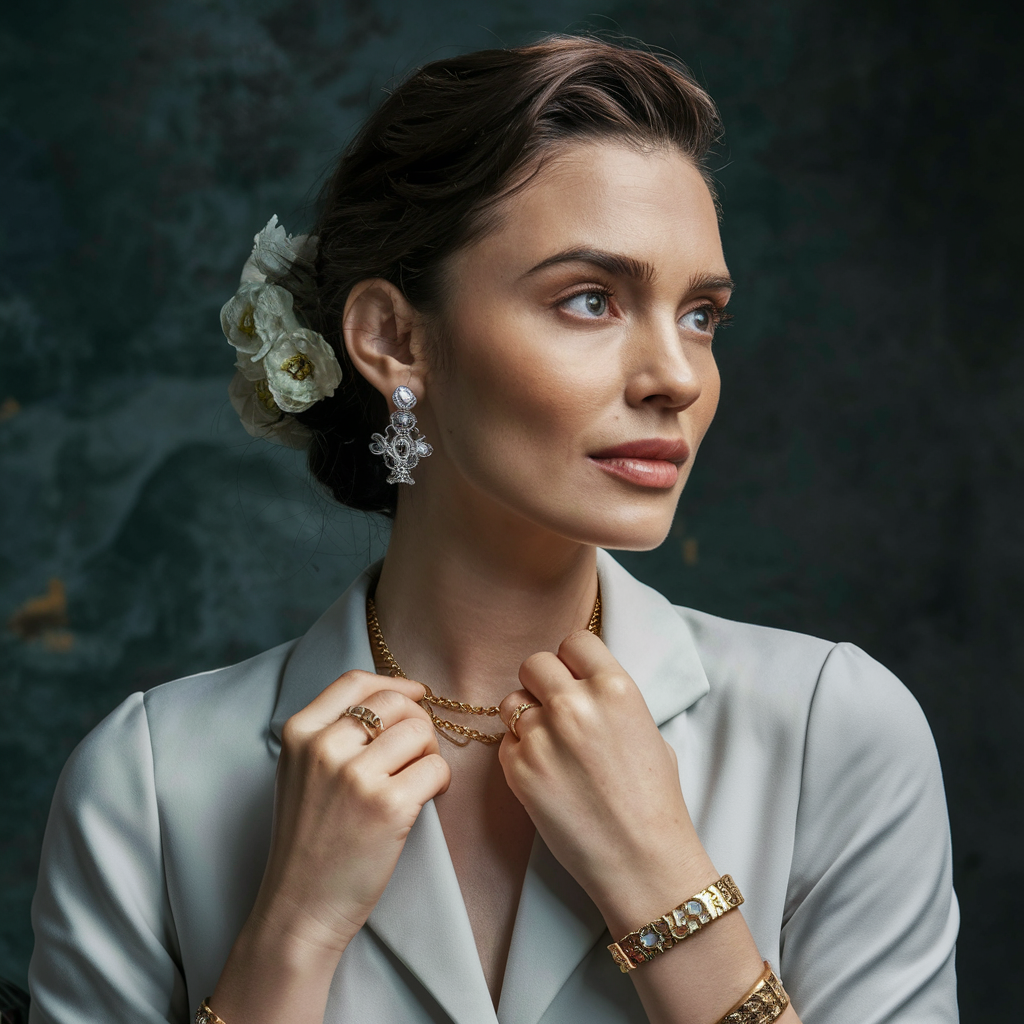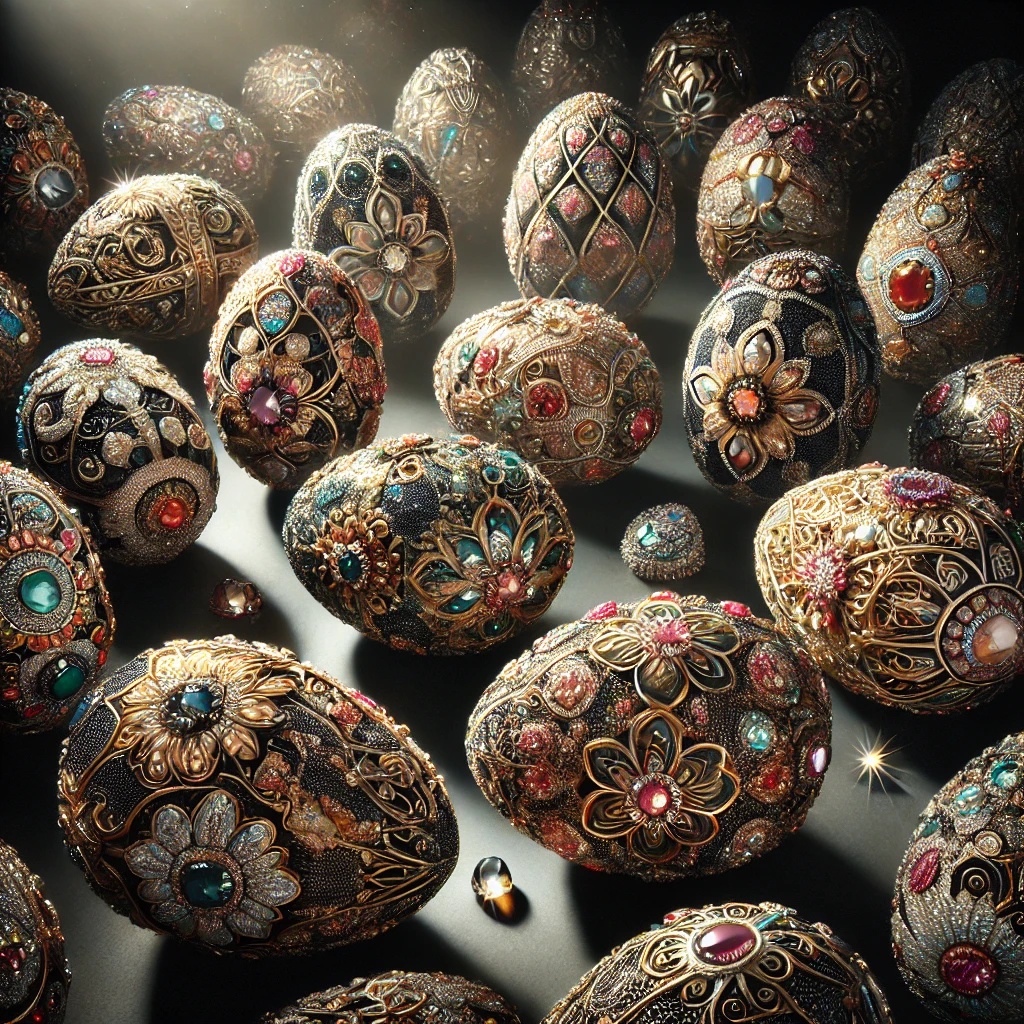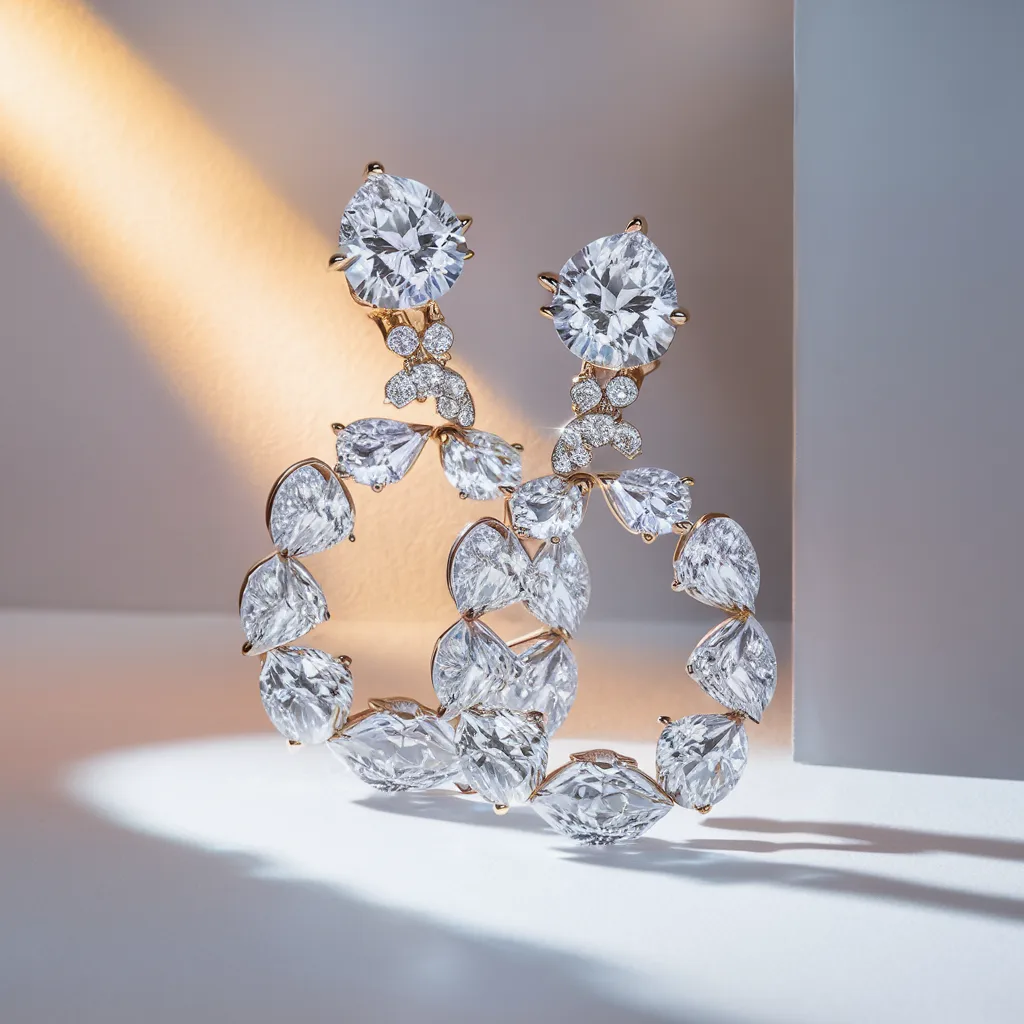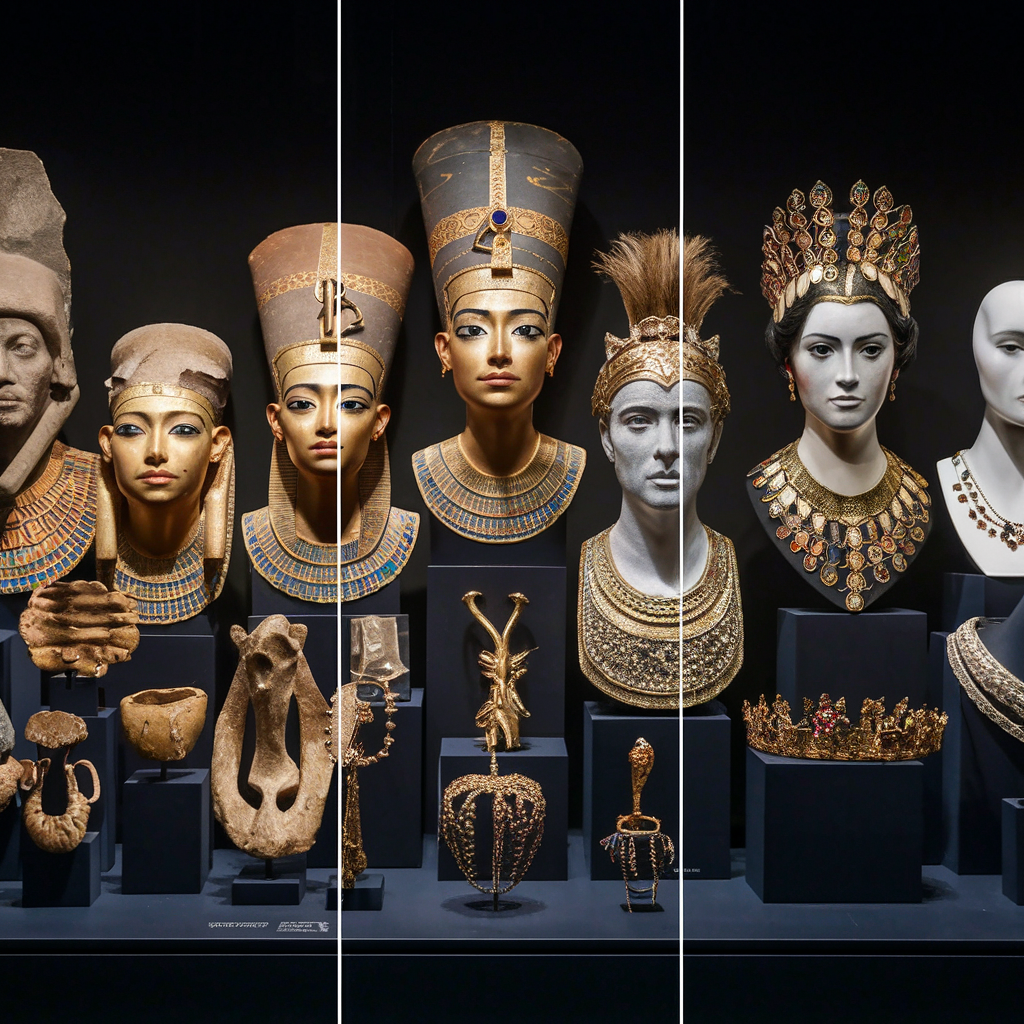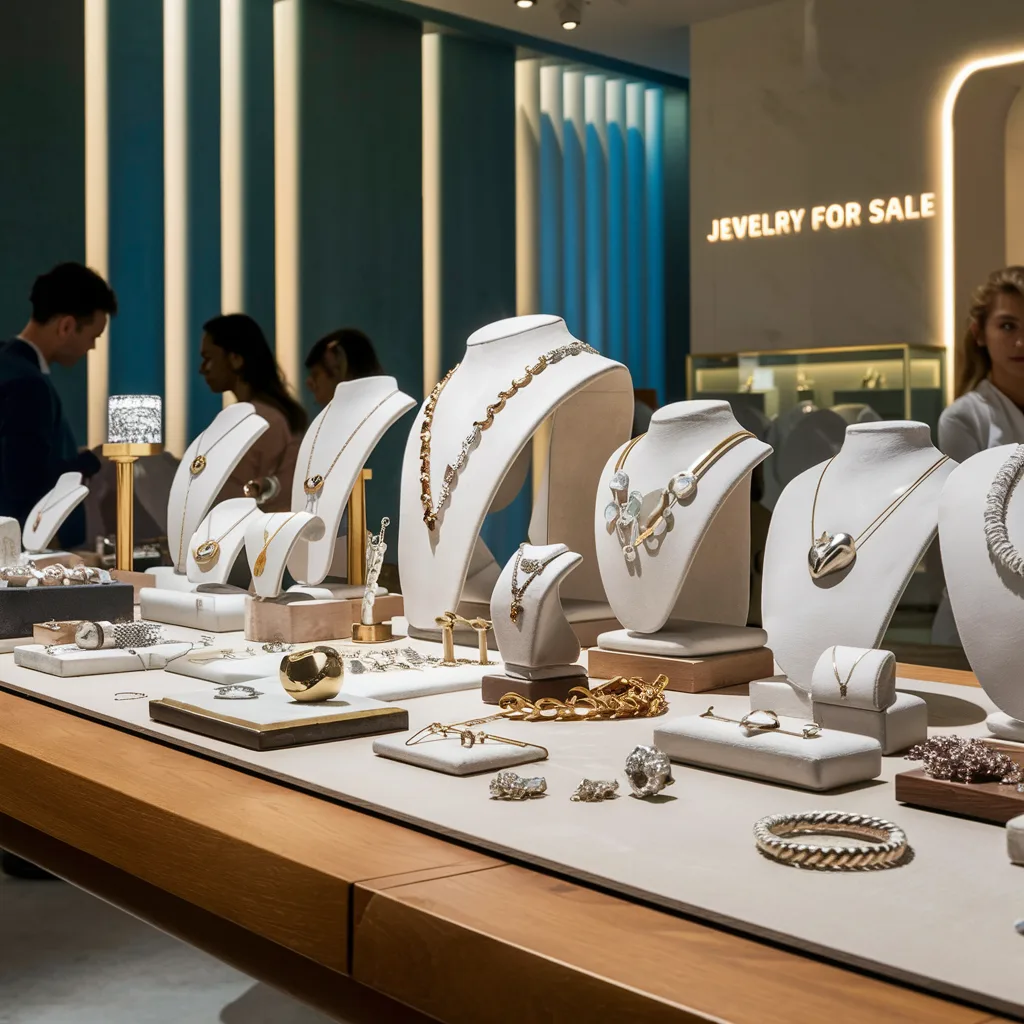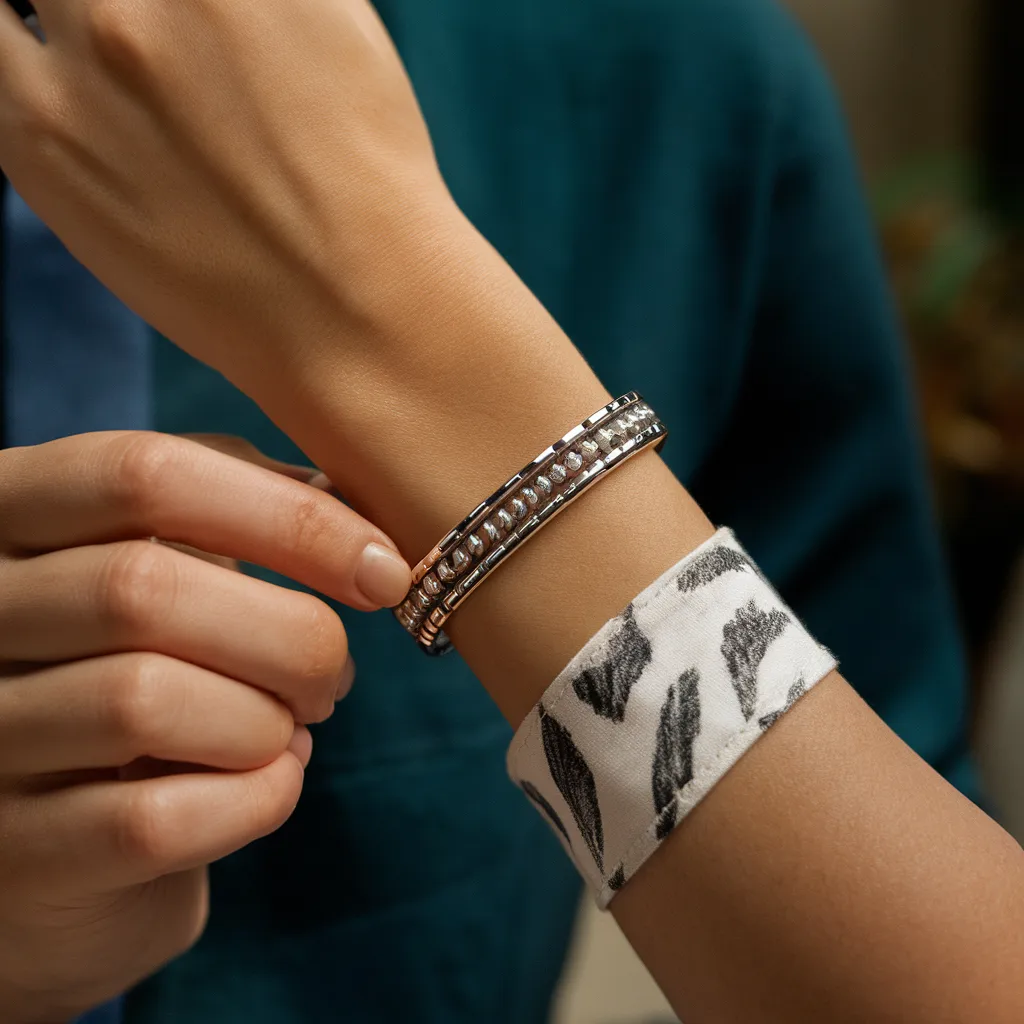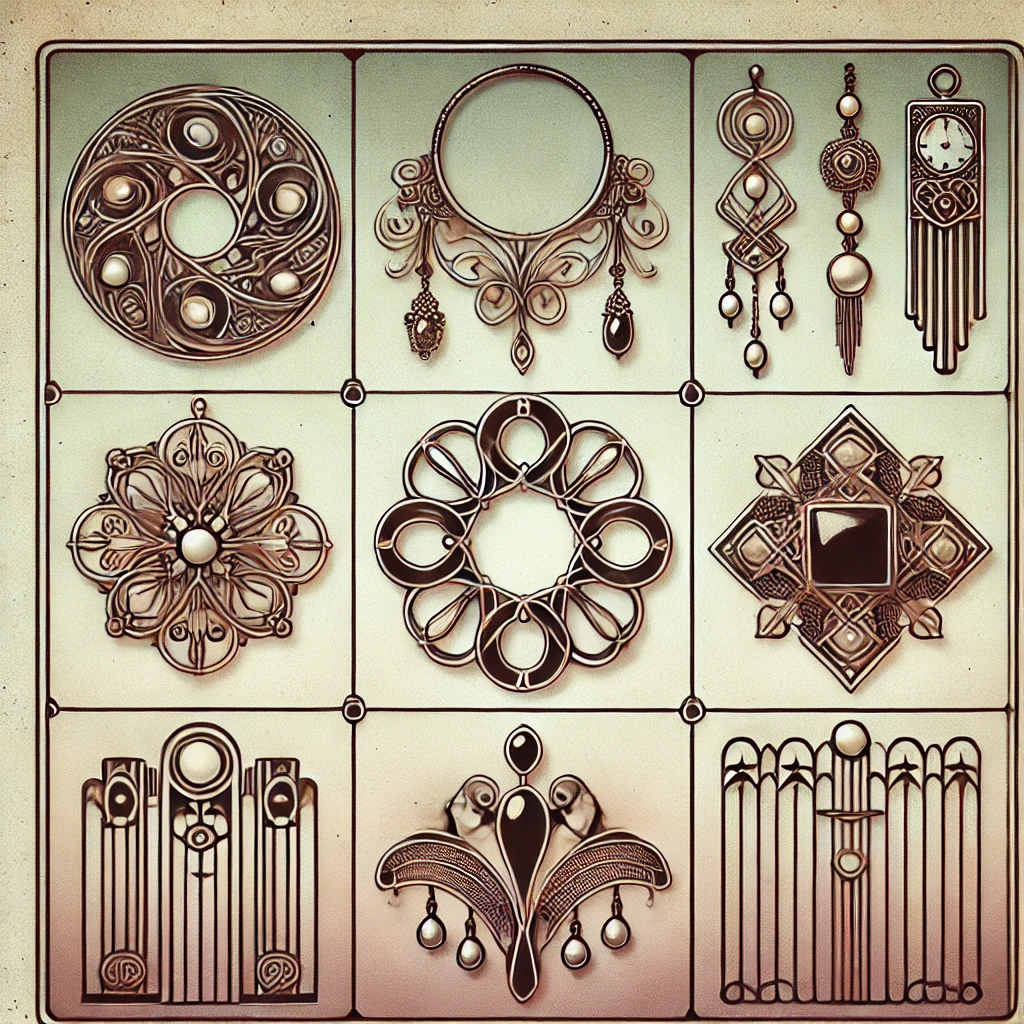
Jewelry as Art: The Influence of Artistic Movements on Jewelry Design
Introduction
Jewelry has long been a reflection of artistic expression, serving not only as personal adornment but also as a symbol of cultural and social values. The intersection of art and jewelry design has led to the creation of pieces that transcend mere decoration, becoming wearable art that encapsulates the essence of various artistic movements. Understanding these influences provides insight into the evolution of jewelry design and its enduring impact on fashion and culture.
Early Artistic Influences
Ancient Egypt
Ancient Egyptian jewelry is renowned for its symbolic significance and use of vibrant materials. Gold, turquoise, lapis lazuli, and carnelian were commonly used to create intricate designs that held deep religious and cultural meanings. Scarabs, the ankh, and the Eye of Horus are iconic motifs from this era.
"The ancient Egyptians used jewelry not just for adornment, but to convey beliefs about life, death, and the afterlife." - Dr. Zahi Hawass
Classical Antiquity
The jewelry of Classical Antiquity, particularly that of the Greeks and Romans, emphasized beauty, harmony, and proportion. Greek jewelry often featured delicate filigree work and motifs inspired by mythology, such as gods, goddesses, and mythical creatures. Roman jewelry, on the other hand, incorporated a broader range of materials and often reflected the wealth and status of the wearer.
"Greek jewelry, with its exquisite craftsmanship and mythological themes, set the foundation for Western jewelry design." - John Boardman
Byzantine and Medieval Periods
During the Byzantine era, jewelry became more elaborate and was heavily influenced by religious themes. The use of gold and precious stones, as well as intricate enameling techniques, were prevalent. Medieval jewelry continued this trend, with the addition of heraldic and symbolic elements that reflected the wearer’s status and family lineage.
"Byzantine jewelry represents a fusion of classical heritage and Christian iconography, resulting in highly symbolic and ornate designs." - Helen C. Evans
Renaissance and Baroque Eras
Renaissance Revival
The Renaissance period marked a revival of classical themes and a focus on humanism and naturalism. Jewelry from this era often depicted scenes from mythology and nature, with a renewed emphasis on symmetry and proportion. Techniques such as enameling, engraving, and gemstone carving flourished.
"Renaissance jewelry is characterized by its return to classical ideals and the mastery of new artistic techniques." - Diana Scarisbrick
Baroque Extravagance
The Baroque era saw a shift towards more elaborate and ornate designs, with jewelry becoming increasingly extravagant. The use of large, faceted gemstones and complex metalwork defined this period. Pieces were designed to dazzle and display the wearer’s wealth and status.
"Baroque jewelry is a celebration of excess, with its opulent designs and luxurious materials." - Anna Somers Cocks
The Age of Enlightenment and Romanticism
Neoclassicism
Inspired by the classical art and architecture of ancient Greece and Rome, the Neoclassical movement brought a return to simplicity and elegance in jewelry design. Cameos, intaglios, and motifs such as laurel wreaths and classical figures were popular.
"Neoclassical jewelry reflects the Enlightenment ideals of order, reason, and a return to classical antiquity." - Charles Truman
Romanticism
The Romantic era introduced a fascination with nature, emotion, and the sublime. Jewelry from this period often featured motifs such as flowers, hearts, and serpents, embodying themes of love, beauty, and mysticism. Sentimental jewelry, including lockets and brooches containing hair or portraits, became popular.
"Romantic jewelry captures the essence of emotion and nature, creating pieces that are deeply personal and expressive." - Geoffrey Munn
Victorian and Edwardian Eras
Victorian Jewelry
The Victorian era, named after Queen Victoria, saw the rise of elaborate and symbolic jewelry. Mourning jewelry, made from materials like jet and onyx, was a significant trend, reflecting the queen's own mourning after Prince Albert's death. Intricate craftsmanship and sentimental themes were prevalent.
"Victorian jewelry, with its rich symbolism and detailed craftsmanship, provides a window into the personal and public lives of the era." - Charlotte Gere
Edwardian Elegance
The Edwardian era brought about a lighter, more delicate style of jewelry, characterized by the use of platinum and diamonds. Designs were elegant and refined, often featuring filigree work and garland motifs. This period emphasized grace and sophistication.
"Edwardian jewelry is the epitome of elegance, with its light, airy designs and exquisite use of materials." - Judith Miller
Art Nouveau Movement
Organic Forms
The Art Nouveau movement, which emerged in the late 19th and early 20th centuries, was characterized by its organic, flowing forms inspired by nature. Jewelry from this period often featured intricate designs of flowers, plants, and animals, utilizing materials like enamel, glass, and semi-precious stones.
"Art Nouveau jewelry breaks away from the rigidity of the past, embracing the beauty and fluidity of the natural world." - Alastair Duncan
Influential Designers
René Lalique, a prominent figure in the Art Nouveau movement, revolutionized jewelry design with his innovative use of materials and techniques. His works often incorporated glass, horn, and enamel, creating pieces that were both artistic and functional. Lalique's designs are celebrated for their delicate beauty and craftsmanship.
"Lalique's jewelry transcends mere adornment, becoming true works of art that capture the essence of nature." - Vivienne Becker
Art Deco Period
Geometric Designs
The Art Deco period, which began in the 1920s, brought a shift towards bold, geometric designs. This movement was characterized by its use of straight lines, symmetry, and streamlined forms. Jewelry from this era often featured diamonds and other precious stones set in platinum, creating a striking contrast and elegance.
"Art Deco jewelry embodies the spirit of modernity, with its clean lines and sophisticated elegance." - Martin Barnes
Exotic Influences
Art Deco designers drew inspiration from a variety of sources, including ancient Egyptian, African, and Asian art. This resulted in the incorporation of exotic motifs and vibrant colors, adding a sense of adventure and novelty to the pieces. The discovery of Tutankhamun's tomb in 1922, for instance, sparked a fascination with Egyptian motifs.
"The Art Deco movement's eclectic influences reflect a global curiosity and an embrace of diverse artistic traditions." - Jared Goss
Modernism and Minimalism
Modernist Movement
The Modernist movement in the mid-20th century introduced a break from traditional forms and materials. Modernist jewelry embraced abstraction, exploring new shapes and innovative techniques. Designers experimented with non-traditional materials like aluminum, plastic, and steel, pushing the boundaries of what jewelry could be.
"Modernist jewelry is about experimentation and breaking away from convention, embracing new forms and materials." - Toni Greenbaum
Minimalism
Minimalism, which emerged in the latter half of the 20th century, focused on simplicity and functionality. Minimalist jewelry emphasized clean lines, unadorned surfaces, and the use of basic geometric shapes. This movement sought to strip away the excess, highlighting the intrinsic beauty of the materials themselves.
"Minimalist jewelry finds beauty in simplicity, emphasizing form and material over ornamentation." - Susan Grant Lewin
Post-War and Contemporary Influences
Mid-Century Modern
Following World War II, jewelry design experienced a surge of innovation driven by new technologies and materials. The Mid-Century Modern movement embraced simplicity, functionality, and futuristic aesthetics. Designers like Georg Jensen and Hans Hansen incorporated clean lines and organic shapes, often using silver as the primary material.
"Mid-Century Modern jewelry reflects a post-war optimism, with its sleek, innovative designs and use of new materials." - Laurie A. Wilker
Contemporary Jewelry
Contemporary jewelry design is marked by its diversity in styles, materials, and techniques. Today’s designers often blend traditional craftsmanship with modern technology, resulting in pieces that challenge conventional notions of jewelry. Mixed media, unconventional materials, and bold, artistic expressions are hallmarks of contemporary jewelry.
"Contemporary jewelry is a dynamic field where boundaries are continually pushed, reflecting the artist's personal vision and the era's zeitgeist." - Damian Skinner
The Future of Jewelry Design
Technological Innovations
The future of jewelry design is being shaped by technological advancements such as 3D printing, computer-aided design (CAD), and wearable technology. These innovations allow for unprecedented precision and customization, enabling designers to create intricate and personalized pieces that were previously unimaginable.
"Technology is revolutionizing jewelry design, offering new possibilities for creativity and customization." - Wallace Chan
Sustainable Practices
As environmental awareness grows, the jewelry industry is increasingly adopting sustainable practices. Ethical sourcing of materials, eco-friendly production methods, and a focus on longevity and recyclability are becoming more prevalent. Consumers are also more conscious of the origins and impact of their jewelry, driving demand for responsibly-made pieces.
"Sustainability in jewelry design is not just a trend, but a necessary evolution towards ethical and environmentally-conscious practices." - Christina Miller
Conclusion
The evolution of jewelry design is a testament to the enduring relationship between art and adornment. From the symbolic pieces of Ancient Egypt to the technologically advanced creations of today, jewelry has continually reflected the artistic movements and cultural shifts of its time. As we look to the future, the integration of technology and sustainable practices promises to further transform this vibrant art form, ensuring that jewelry remains a dynamic and expressive medium.

